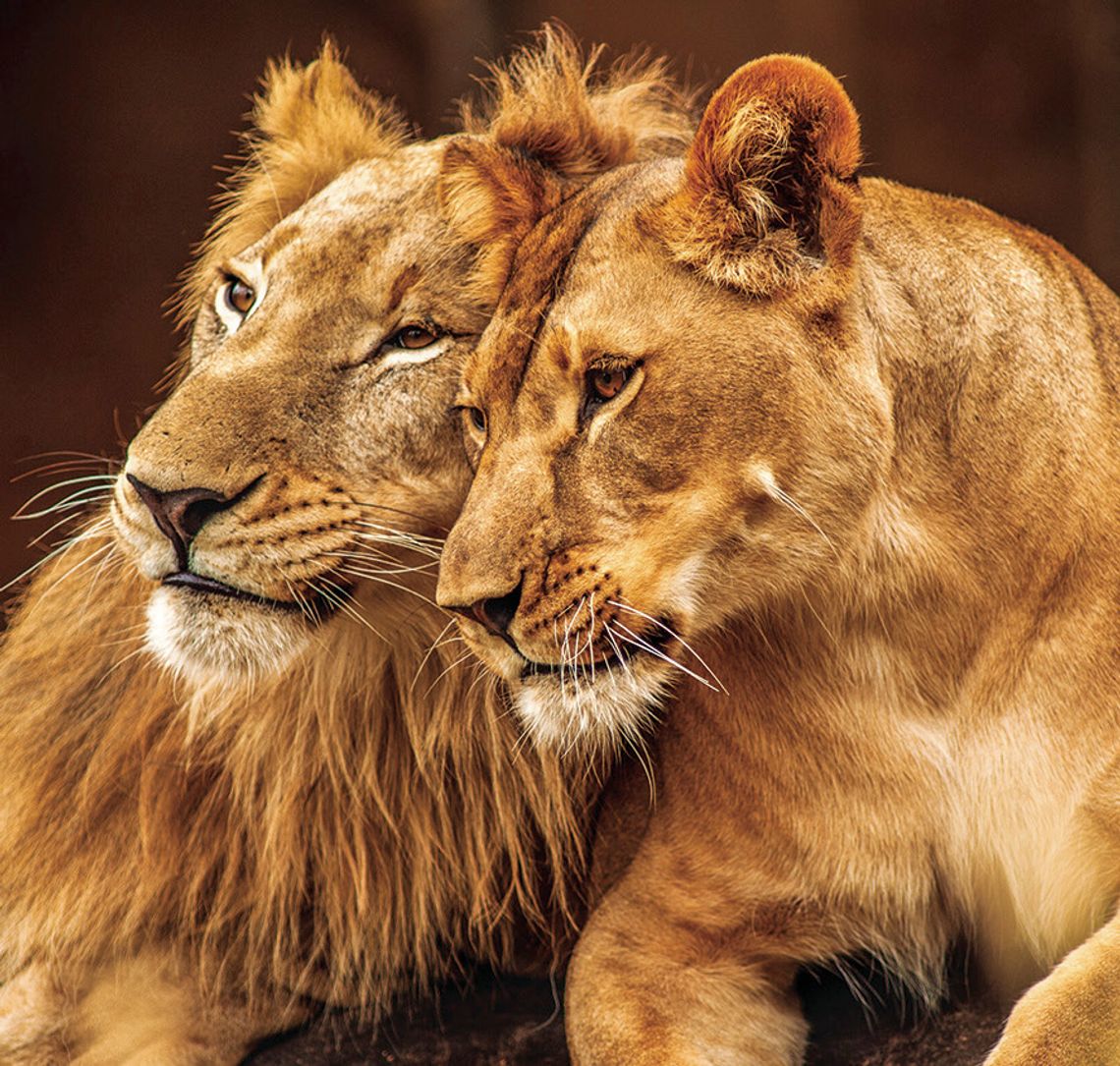Exploring Nature: L
ions
I well remember my first sighting of a lion up close. We were on a guided tour in Africa and were riding in a Land Rover-type vehicle with bench seats that allowed us to sit in the open and have looks all around.
We came upon three lions, all female, lying in the shade of a tree. I especially remember their golden eyes and their sleek tan body color.
It dawned on me that these were all meat eaters and that I was, in essence, one large blob of meat. All the folks in my party were essentially a buffet lunch had the lions cared to partake of us.
Later, I asked our guide why the lions did not attack us. He said as long as we stayed in the vehicle, the lions regarded us as a part of that vehicle. But if we had jumped off, we would have instantly become prey.
The majestic lion eats grazing animals ranging in size from small antelopes to zebras. Several lions in a family may bring down a full-grown elephant, rhino or hippopotamus.
Females do most of the hunting, using stealth and teamwork to bring down large animals. The male, recognized by his regal mane, is the first to eat after a kill has been made. Females have two to four young every other year, and a general rule is that the more plentiful the food, the larger the litter.
Lion cubs are reared by their mother away from the pride, so they do not compete with adults for food. By 10 months, they learn to stalk but cannot yet kill their prey.
Male lions develop manes at five years.
Lions are a lot like domestic cats in some regards. They lick their bodies with a rough tongue and are experts at relaxing and taking a break. A pride of lions sometimes sleeps for as long as four days before waking.
That’s one serious catnap.









